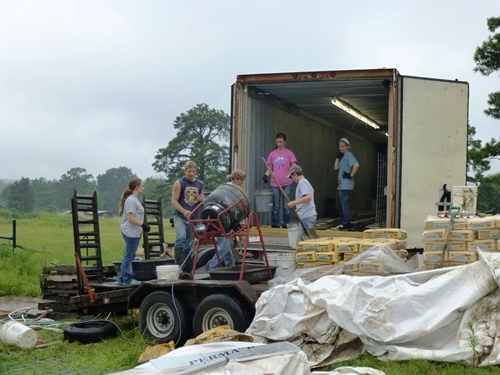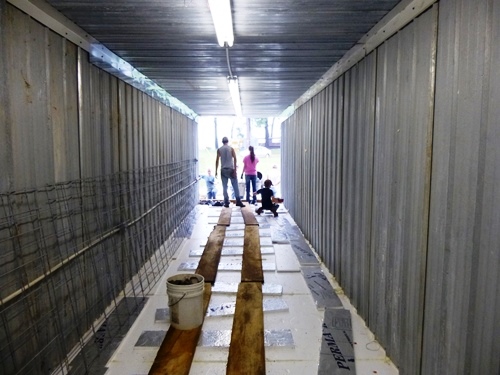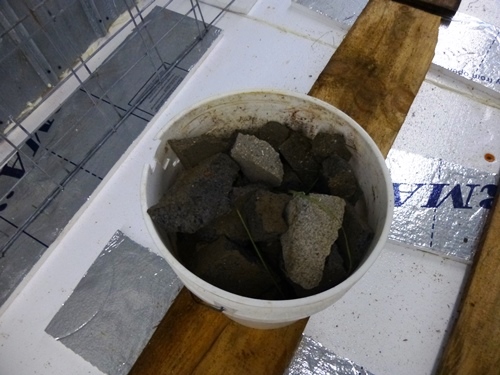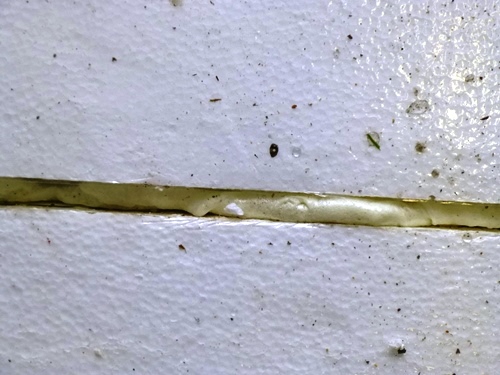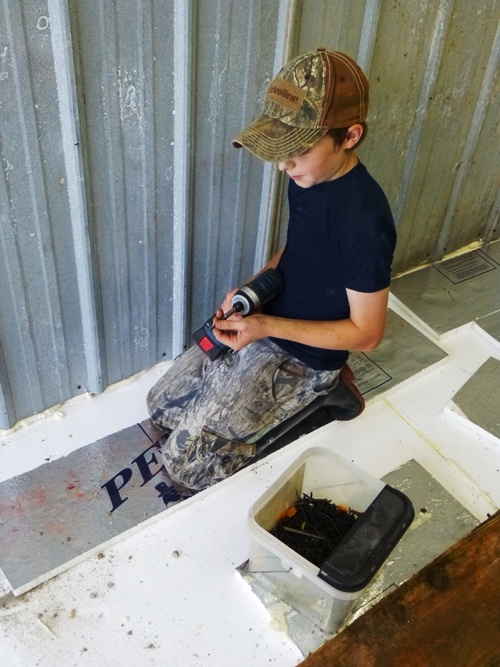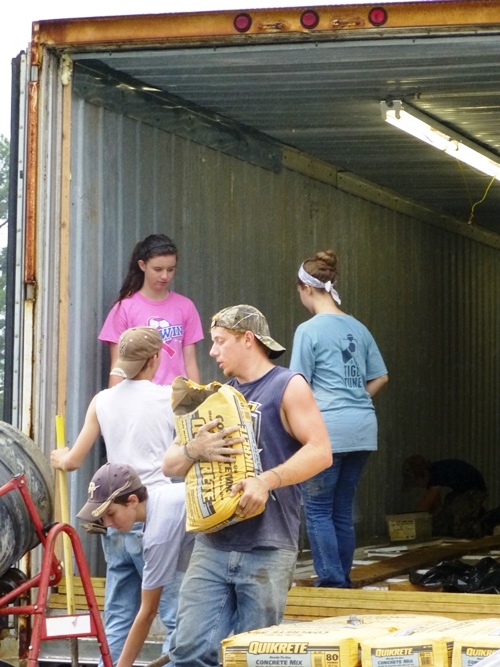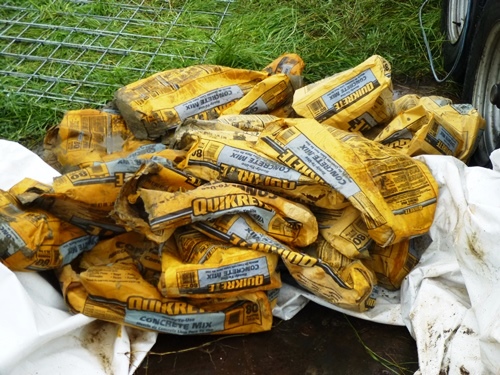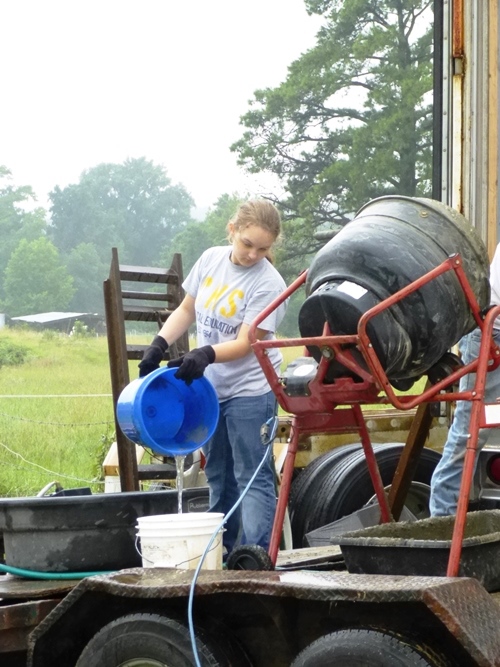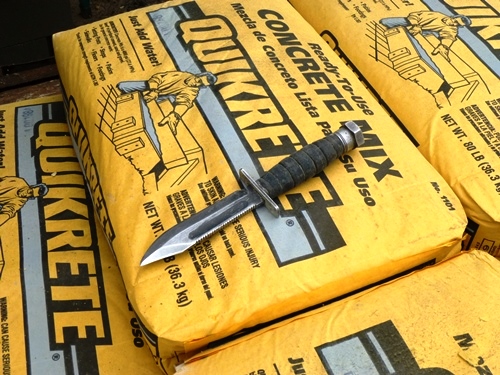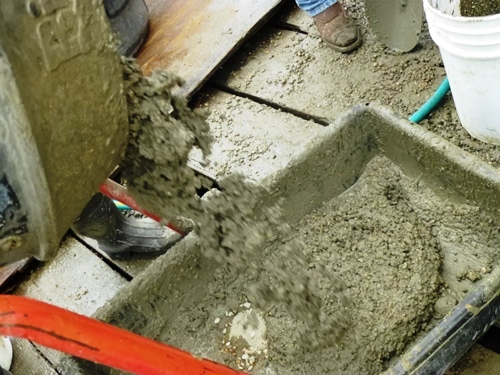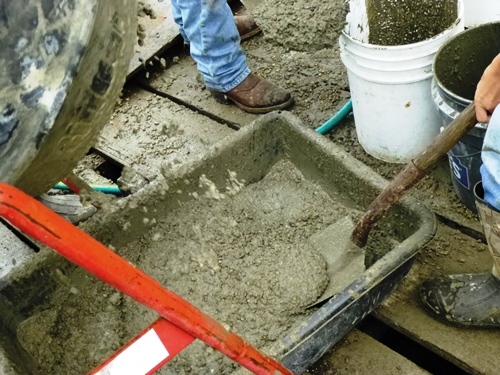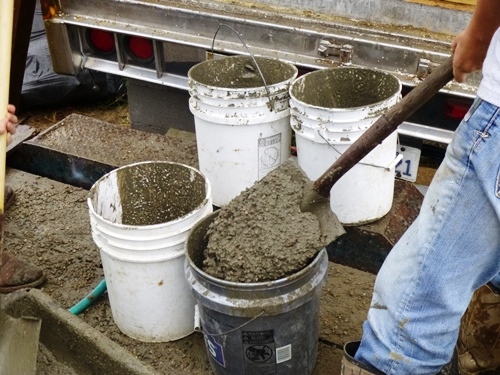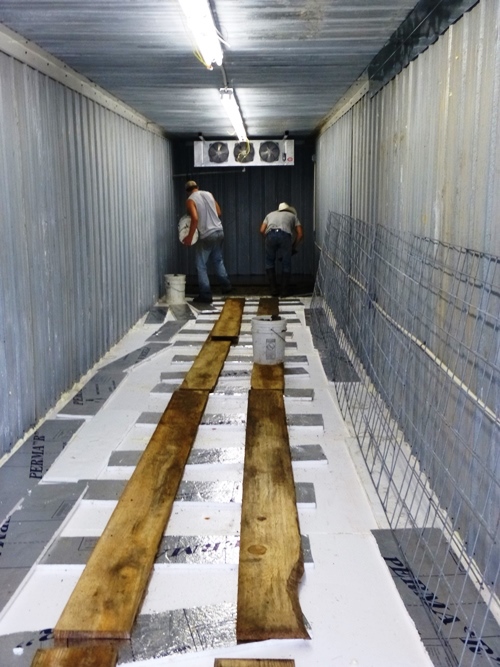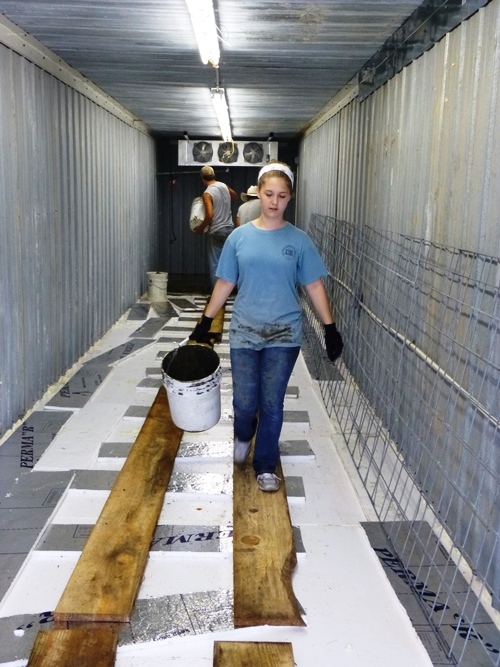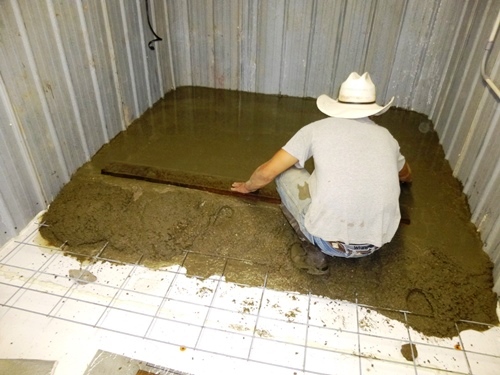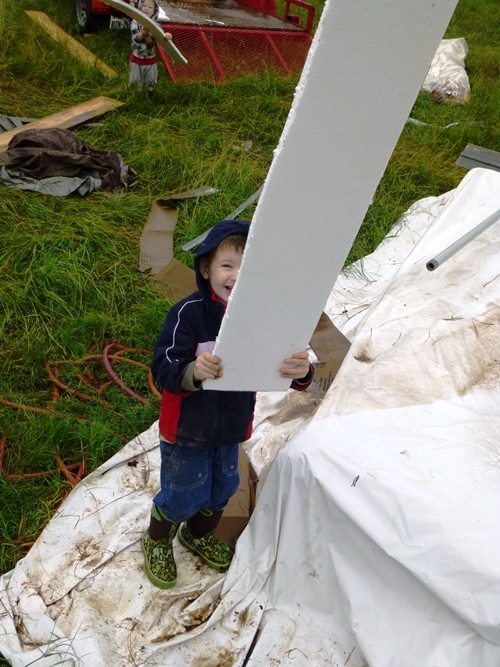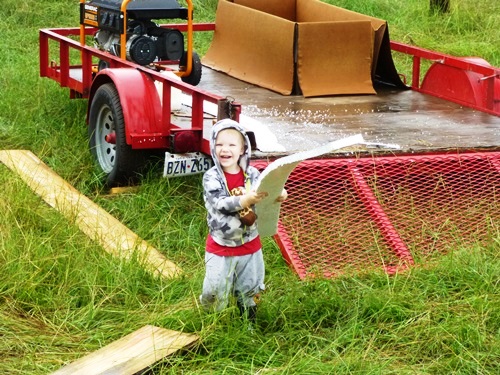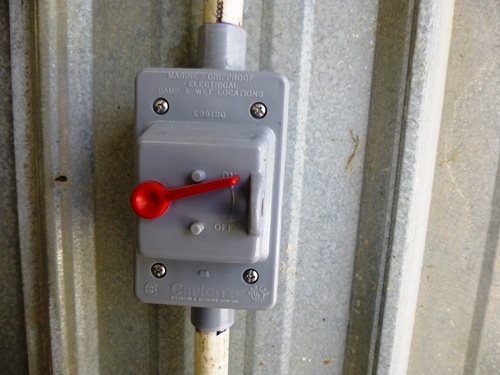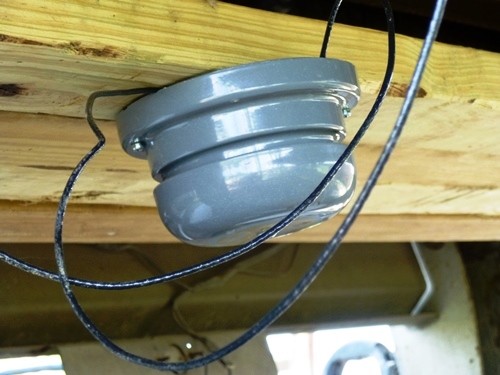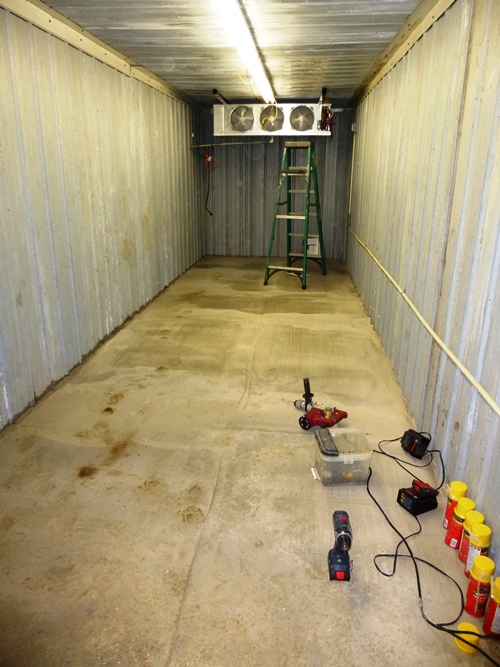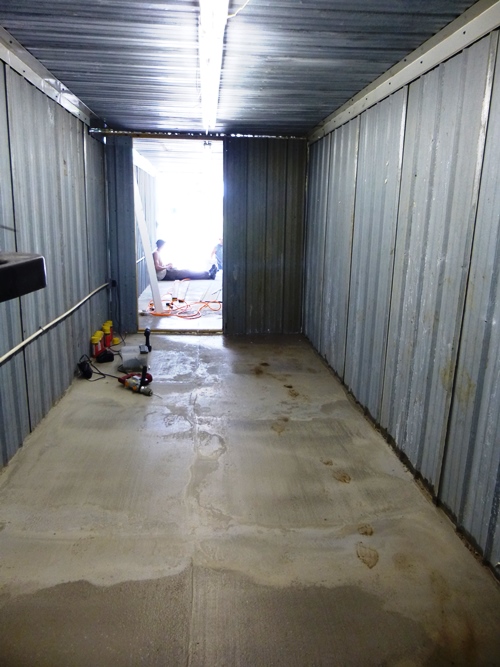Last week we were able to welcome some students from East Texas Baptist University (ETBU) who are interested in learning about sustainable food production. Earlier this summer, Dr. Cassie Falke contacted me about bringing some of her students to the ranch to learn a little bit more about the connection between people and food. We love to share what we do, and what better way for someone to learn about food than to help produce it? They gave up their Saturday sleep-in time to have a chance to share in our labor on a typical morning. Here are some photos of their adventure at Shady Grove Ranch.
First we relocated the laying hens. Their nest house is mobile, so while the girls leap-frogged the nets to an adjacent paddock, Matt moved the house with the tractor. Afterward we explained some of the Egg-Mobile’s functions, such as roost space, shade, predator cover, and nest boxes. It was too early in the day to collect eggs, but we had plenty of other chores to do!
Left to right: Krystin, Melissa, Dr. Falke, and Esther meet one of the older chickens up close.

Shevi is always excited for an opportunity to touch the infamous electric fence. His favorite question is, “Fence off? I’d like to touch it.”

Our next stop was to check on the turkeys. Along the way, we showed the students a common weed that we are dealing with. We call it “goatweed,” but even goats won’t eat it, which says a lot. It is really called Hogwort or Wooly Croton (Croton capitatus). Poor or bare soil will tend to grow lots of weeds in attempt to keep the soil from eroding. But if the weeds are not managed properly, they will shade out grasses and take over. Being a no-chemical farm, we manage our weeds mechanically—either by mowing or by pulling them up by hand. I offered Charlie, Dr. Falke’s son, a chance to earn some money during his visit. A penny per goatweed was our deal. He started yanking! He ended up with over 100 weeds, and I offered to pay him in eggs, which he was thrilled about. He got to choose his own out of the henhouse—a blue one and a brown one!

We arrived at the turkeys and refreshed their feed and water. I caught one of then hens to let her meet our visitors. Charlie got to pet a turkey!

Next we were off to the broilers to move them to new pasture. We explained some of the challenges we face with pasture-raised chicken, including weather, predators, and labor requirements. They jumped in immediately to help. Step 1 is to remove the water bowls and feed troughs to the new location. Melissa and Charlie helped with that as Matt positioned the dolly at the back of the pen.

Jermaca was in charge of keeping the chickens away from the back of the pen during the move so that none of the birds would get run over. Matt’s hat doubles as a chicken-herder, so she borrowed that and made effective use of it.

Laura, Esther, and Krystin watered the groups after they were moved.

Esther made friends with Zeke, our livestock guardian dog, and kept him company while we moved his chickens. He loves visitors, as long as they only have 2 legs!

As we do with all our visitors, we warned the ETBU’ers about the electric fence. They got curious what it feels like, so Matt showed them how to test it with a piece of grass. Kristin was among the brave ones.

Jermaca and Laura laugh about the experiment. Charlie is thinking he’d like to try it, too, but just isn’t sure. He ended up getting first-hand experience later down at the pig paddock, except he got the real thing!

Finally, it was time to check on the beef cows. Matt demonstrates how docile his cattle are. His favorite group is the bulls because they are the most interactive. Don’t try this at home unless you’re 6’5″ and have really heavy boots.

We had a great talk with the girls at the end of their visit, discussing what part college students might play in changing their food culture. I asked the question, “Does food production matter to you?” One of the girls had chosen to be a lacto-ovo-vegetarian because of the factory farming practices that abound in the meat industry. Another of the girls wondered what she could do as a college student. It was a rich time of conversation about a very real issue in our country—one that covered the topics of reproductive health, environmental protection, weight management, nutrition, and humane stewardship of our animal resources.

Some of the ideas we discussed were to shop at farmers markets for their non-cafeteria meals. Perhaps they could get involved with their school’s decision-making committees and vote for organic and/or local options for their cafeteria. I encouraged them to take small steps forward. Any step a person takes in the right direction is better than what they were doing yesterday. It doesn’t require a total overnight transformation to make a difference in the way food is produced in our country. One meal, one drink, one bite, can be a step toward positive change.
I hope that by seeing a direct-to-consumer small family farm they will be encouraged to think about their food choices and begin to build their eating habits around sustainable, local, and organic. We are excited to see college students get involved with real food!

